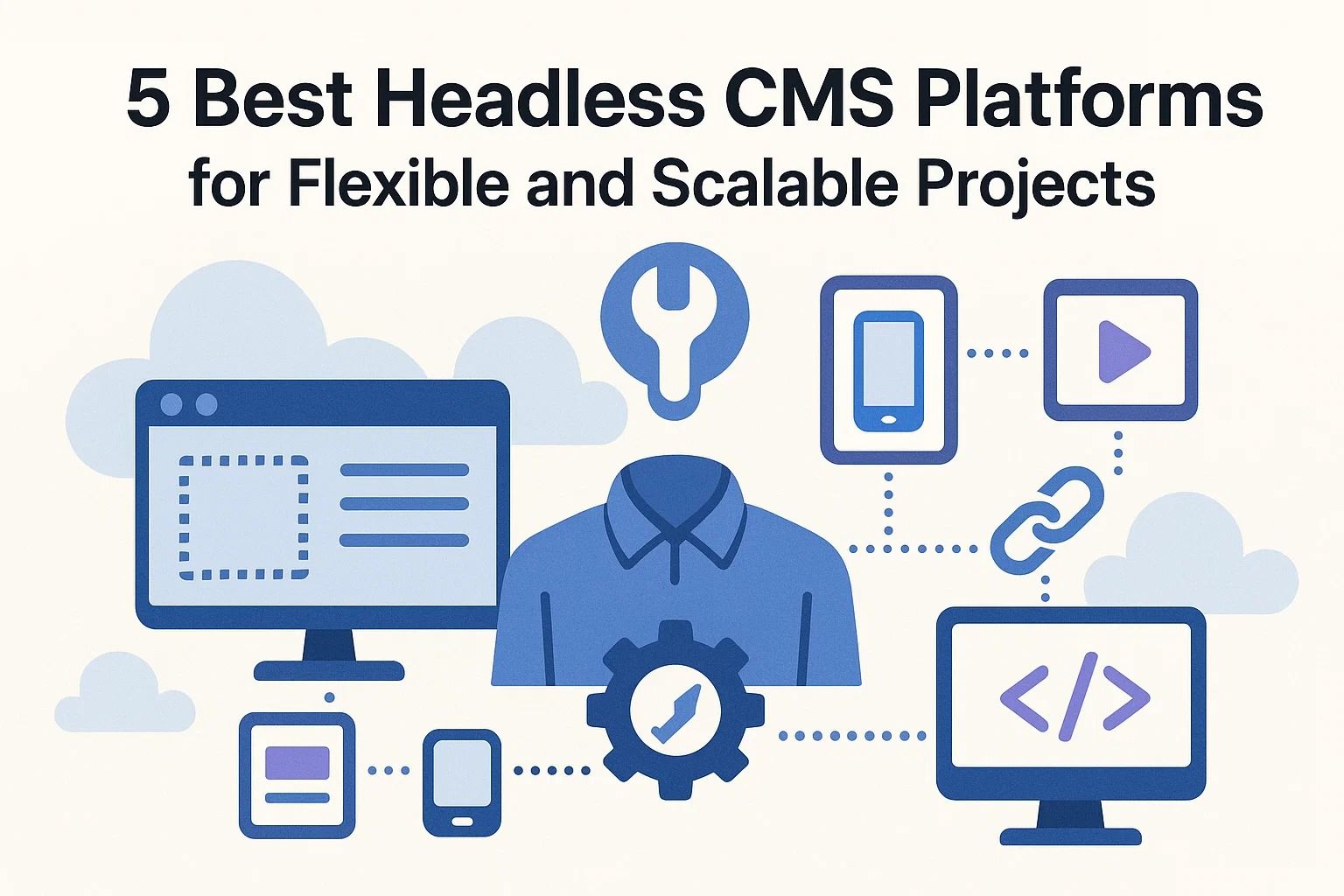
5 Best Headless CMS Platforms for Flexible and Scalable Projects
Headless CMS Web Development
Traditional CMS platforms like WordPress or Joomla have dominated the web for years. However, the rise of modern applications and the need for multi-channel content delivery pushed developers and businesses to look for more flexible solutions. This is where the Headless CMS approach comes in, separating content management from presentation layers.
The main idea of a Headless CMS: “Content and presentation are decoupled.” Editors manage content, while developers have complete freedom to build any front-end experience.
What Is a Headless CMS?
Unlike traditional CMS systems that tightly couple backend and frontend, a Headless CMS focuses solely on content management. Content is stored centrally and delivered via APIs — usually REST or GraphQL — to any digital platform: websites, mobile apps, IoT devices, or even AR/VR environments.
Key advantages of a Headless CMS include:
- Flexibility: Build frontends with React, Vue, Angular, or any framework of choice.
- Scalability: One content repository powers multiple platforms simultaneously.
- Improved workflow: Content editors enjoy a user-friendly backend, while developers have no restrictions on technology stack.
Why Businesses Are Moving to Headless CMS
In today’s digital-first world, businesses rarely rely on a single website. They launch mobile apps, chatbots, and immersive platforms that all need consistent content. Instead of duplicating data across multiple systems, companies adopt Headless CMS as a single source of truth for their content strategy.
Omnichannel Delivery
Distribute the same content across web, mobile, and emerging platforms with ease.
Future-Proof Development
Frontend and backend evolve independently, allowing faster adoption of new technologies.
How to Choose the Right Headless CMS
Not all platforms are created equal. Choosing the best Headless CMS for your project depends on your goals, budget, and technical expertise. Some important criteria include:
- User-friendly dashboard: Non-technical editors should be able to manage content without difficulty.
- API capabilities: Support for both REST and GraphQL for flexible integration.
- Scalability: Ability to handle traffic spikes and enterprise-level workloads.
- Integrations: Pre-built SDKs and plugins for popular frameworks.
- Security and access control: Role-based permissions and compliance features.
Modern Headless CMS solutions serve both small startups and large enterprises, powering blogs, e-commerce stores, and even global content hubs.
Top 5 Headless CMS Platforms
In the next sections, we will explore five leading Headless CMS platforms, highlighting their strengths, weaknesses, and best use cases. This will help you make an informed decision on which one suits your project.
Continue reading: Hosting vs. VPS: Key Differences Explained
2. Contentful
Contentful is one of the most popular headless CMS platforms on the market, trusted by startups and global enterprises alike. Its API-first approach allows developers to deliver content seamlessly to websites, apps, and IoT devices. With robust developer tools and a modular content structure, Contentful is perfect for projects that demand scalability and customization.
- Extensive RESTful and GraphQL APIs
- Role-based permissions and advanced user management
- Highly scalable infrastructure for global projects
- Integrations with popular tools like Gatsby, Next.js, and Netlify
Best for: Businesses that want a flexible and scalable CMS to deliver personalized content across multiple channels.
3. Strapi
Strapi is an open-source headless CMS that has quickly gained popularity among developers for its flexibility and self-hosted nature. It is built with Node.js, which makes it fast and easy to integrate with modern JavaScript frameworks like React, Vue, and Angular. Being open-source, Strapi offers complete customization, making it a strong choice for developers who want full control.
- Open-source and fully customizable
- Supports both REST and GraphQL APIs
- Self-hosted or cloud deployment options
- Strong developer community and active ecosystem
Best for: Developers and startups who prefer open-source solutions and want full control over hosting and customization.
👉 If you’re interested in learning more about how to choose between cloud and VPS hosting, check out our article Hosting vs. VPS: Key Differences Explained.
4. Sanity
Sanity is a highly flexible headless CMS designed for teams that want to create structured, real-time content. Its standout feature is the Sanity Studio — an open-source content editing environment that developers can fully customize to match their workflows. Sanity also provides real-time collaboration, making it ideal for large teams working on complex projects.
- Real-time collaboration for editors and developers
- Customizable editing environment with Sanity Studio
- API-first with GraphQL and GROQ query language
- Scalable hosting with Sanity’s managed cloud
Best for: Teams that need collaborative, real-time content management with flexible customization.
5. Ghost
Ghost is a lightweight, open-source headless CMS primarily built for publishers, bloggers, and content-driven websites. While it supports headless functionality, Ghost is often chosen for its simplicity, speed, and SEO-focused design. It’s perfect for businesses that want to focus on publishing without complex setup.
- Optimized for speed and SEO
- Simple interface for writers and editors
- Supports headless content delivery via API
- Strong ecosystem for newsletters and memberships
Best for: Publishers and content creators who want a minimal, fast, and SEO-friendly CMS.
✅ Choosing the right headless CMS depends on your project needs. Platforms like Strapi and Sanity offer developer freedom, while Contentful and Ghost simplify content delivery. For more on hosting options, read our detailed guide on Cloud Hosting Security Tips.

















